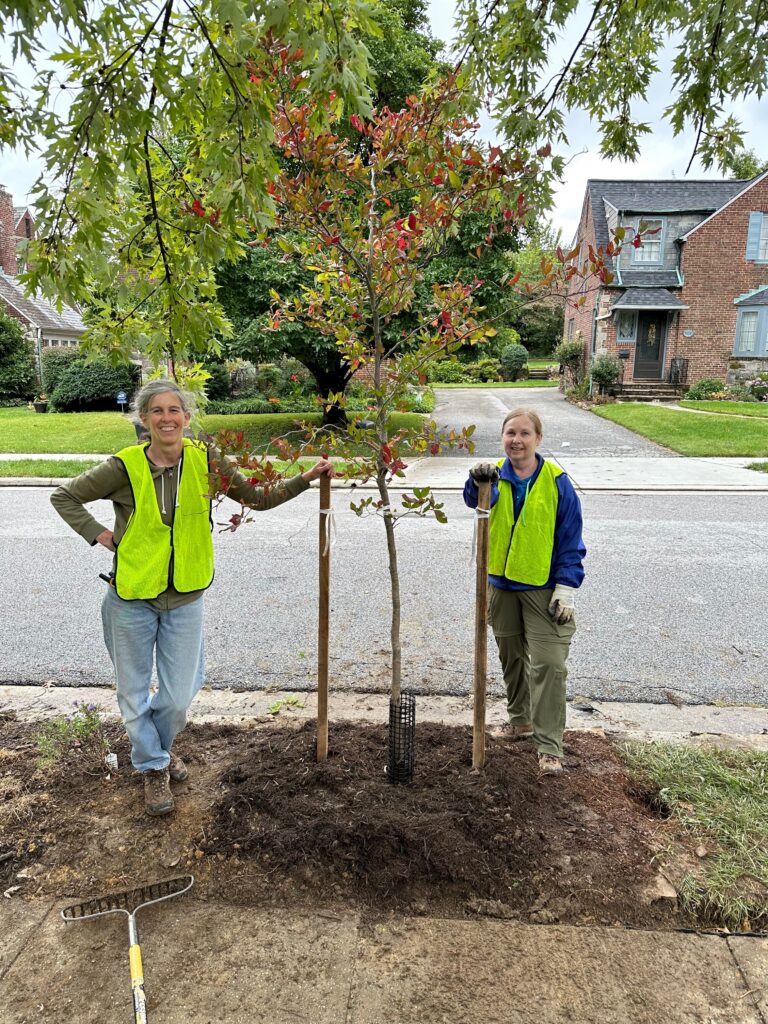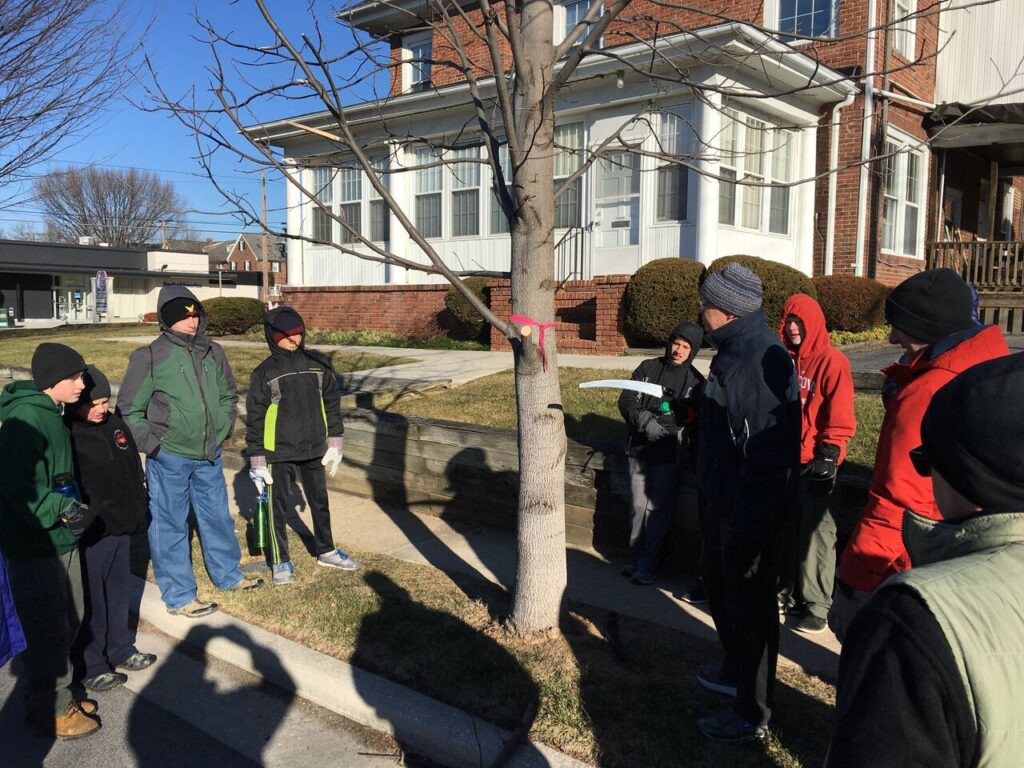Becoming your neighborhood tree steward can be a very rewarding experience. Increasing or preserving the tree canopy improves the health and beauty of your community. If you live in an older community, many of the established trees are nearing the end of their lives. With a typical 40 years to maturity, now is the time to plant the mature canopy of the future.
PLANTING TREES
- What is your tree source?
Blue Water Baltimore (BWB) has established a community tree planting program for street and yard trees in the following watersheds: Jones Falls, Gwynn Falls, Baltimore Harbor and Herring Run. They assume the responsibility for obtaining permission to plant in the right of way for street trees, inspections and other approvals through Baltimore County. Check BWB’s website to see if your community is in one of its watersheds.
- Generally, BWB will plant, mulch and stake a tree and provide a watering device to the homeowner for $75 per tree. BWB provides an online tool your neighbors can use to sign up and pay for the tree. Additional rebates from your community association to the homeowner should be provided as a rebate after full payment is made to BWB.
- Gunpowder Valley Conservancy
- Private nurseries may give you a price for bulk sales.
- What kind of tree should be planted? An extensive list of native trees is provided for your education in the Articles section of this website. Blue Water Baltimore will provide a short list of trees available for each planting season. From that short list, you can help the homeowner determine the most appropriate tree for their location. Often more than one tree will be appropriate for a location and then homeowners make selections based on tree shape, size, fall foliage color, wildlife value, leaf shape and other personal preference criteria.
Our goal is to plant native canopy trees. Native canopy trees grow to a minimum height of 30-40 feet and a maximum height of 50-90 feet. Canopy trees have a bigger impact on the health and beauty of our lots and streets than small stature trees (also known as understory or ornamental trees.)
- Canopy trees provide more shade to paving and buildings, extending the life of paving and lowering energy bills to our homes.
- Mature canopy trees absorb and filter more storm water, absorb more air pollution, and provide more habitat for wildlife than understory trees.
- Property values and curb appeal increase with the size of trees.
- Studies by the USDA Forest Service have even shown that crime is lower where trees are taller.
- Canopy trees live longer! A large tree will live 120 years compared to 30 years for a small tree.
- Where should the tree be planted?
- Street trees: Canopy trees planted between the sidewalk and curb are called street trees. Understory trees are not appropriate for this location as they typically have lower branching that interferes with pedestrian use of the sidewalks and vehicular use of the road. The space between sidewalk and curb must be a minimum of 6 feet wide to be eligible for a street tree.
- Yard trees: Canopy trees planted in yards should have a minimum 10’ x 20’ area and should not be planted under overhead power lines. Native understory trees can be planted under power lines.
- Recommended setbacks:
- 25’ from intersections, road signs and street lights
- 10’ from fire hydrants
- 5’ from utility meters or driveways
- 2’ from property lines
- 25’ from the nearest canopy tree
- 15’ from the nearest understory/ornamental tree
- 40’ from power lines
- How do I convince my neighbors to plant trees?

-
- Advertise in your community newsletter, Facebook page and list-serve.
- Include a letter in your “new neighbor” package introducing yourself and the tree planting program.
- Take a walk around the neighborhood and drop a flyer or knock on doors of homes that have room for a tree. Developing personal relationships with neighbors is the most effective way to encourage tree planting and one of the rewards of being a tree steward!
- Properties with large ornamental or canopy trees that are near the end of their lives are good locations to plant “succession trees.” During the final years of the mature tree, the young tree can get established and can get a head-start on taking the place of the older trees.
Other resources:
- The critical ecological role our yards can play is explained in Doug Tallamy’s book Bringing Nature Home. This list shows the top 10 native trees to attract butterflies and moths that support native bird species.
- Links for detailed tree information and photos
- Baltimore County Community Policy and Guidelines for
Community Tree Planting Projects:
MAINTAINING TREES
As tree steward, you can also protect the established tree canopy and newly planted trees by:

